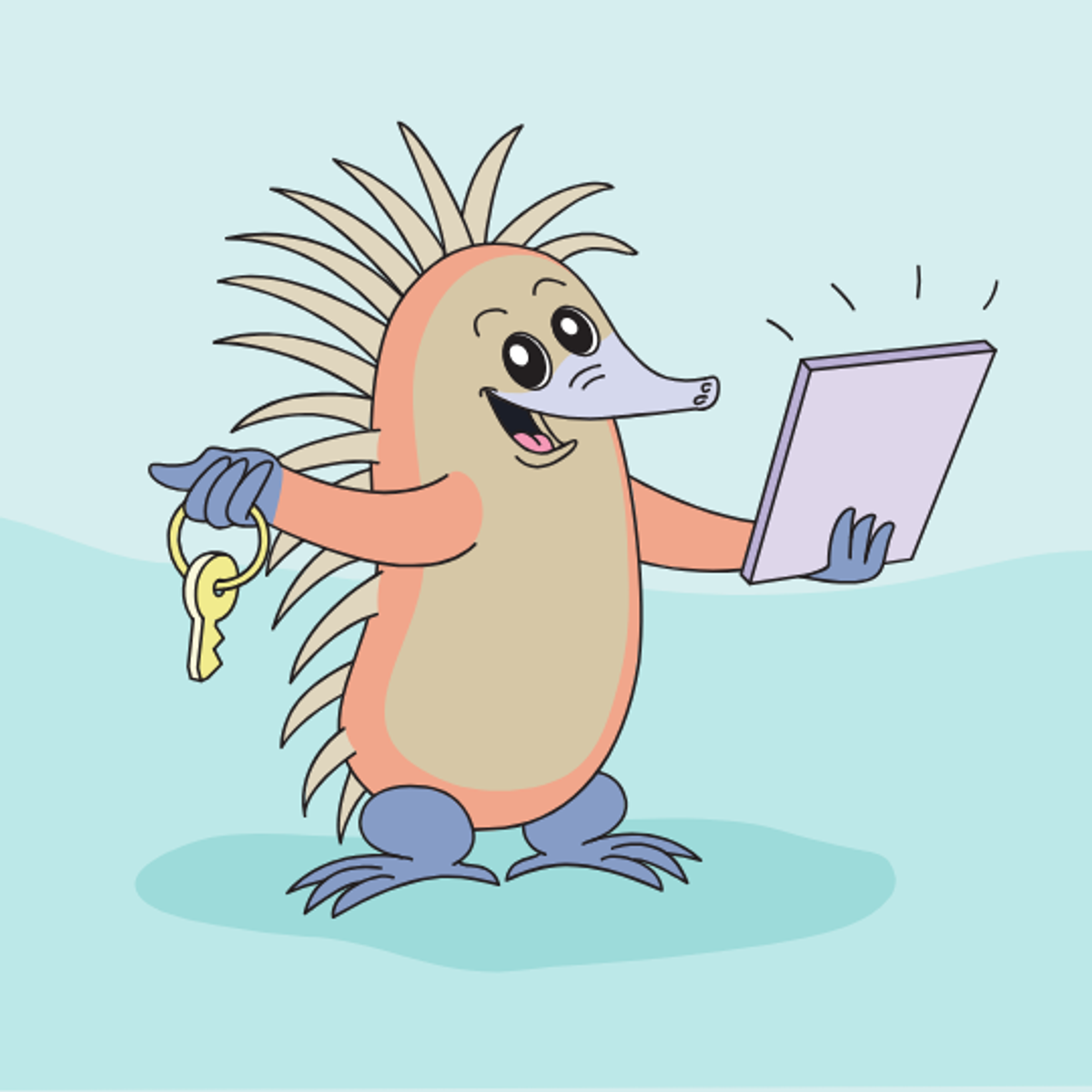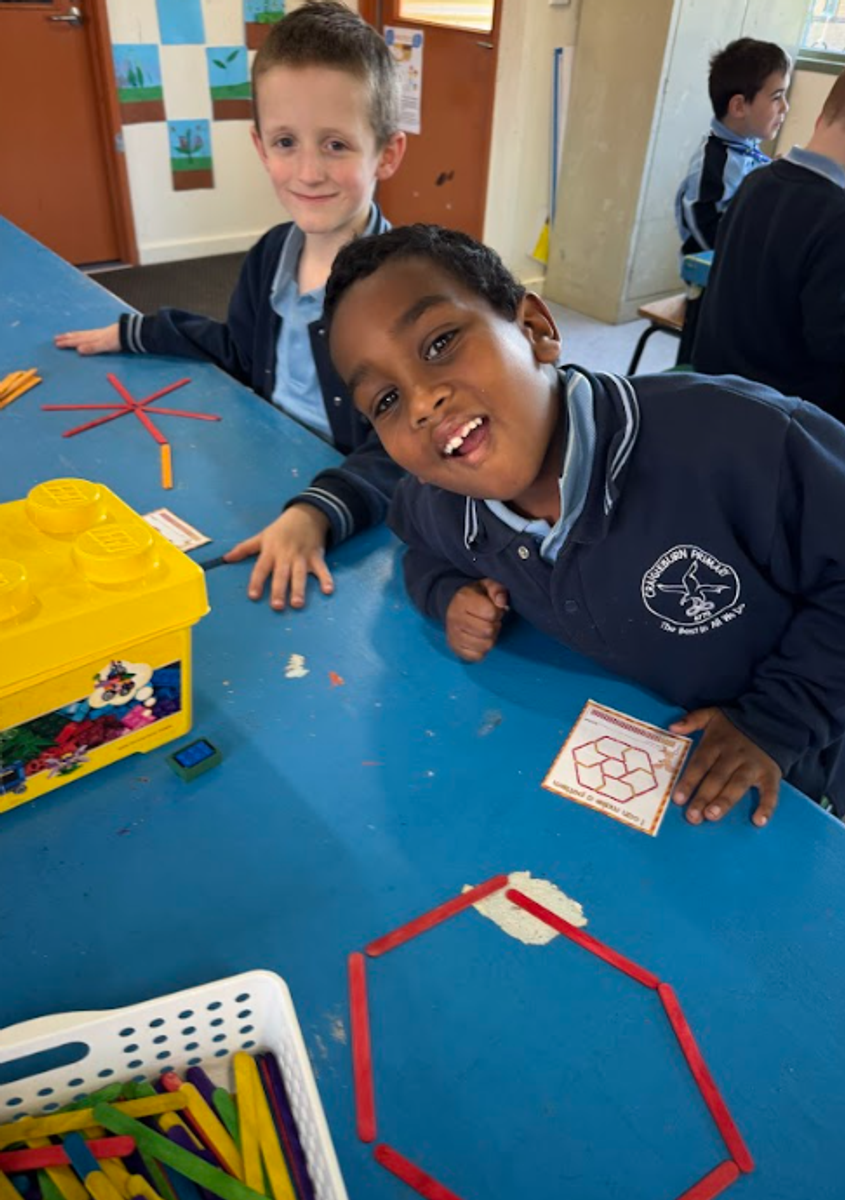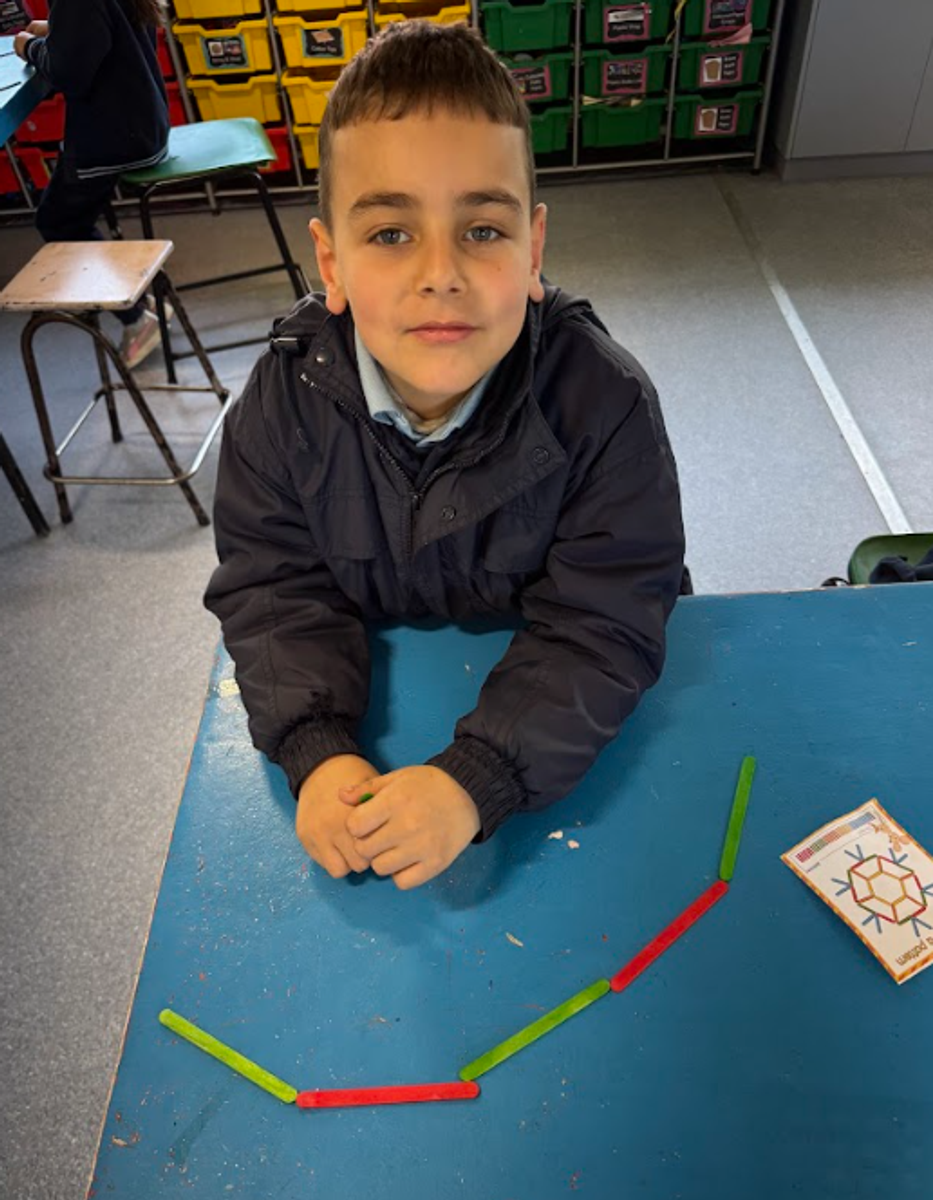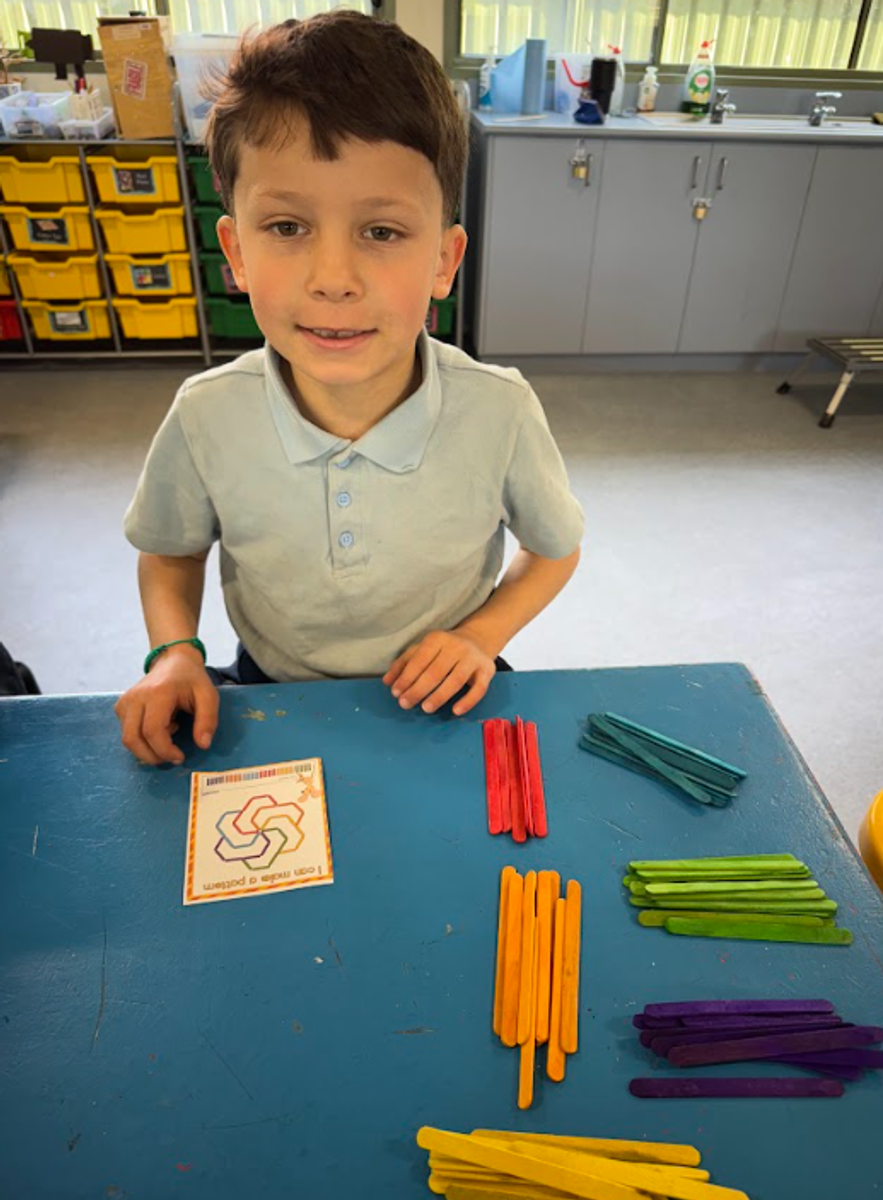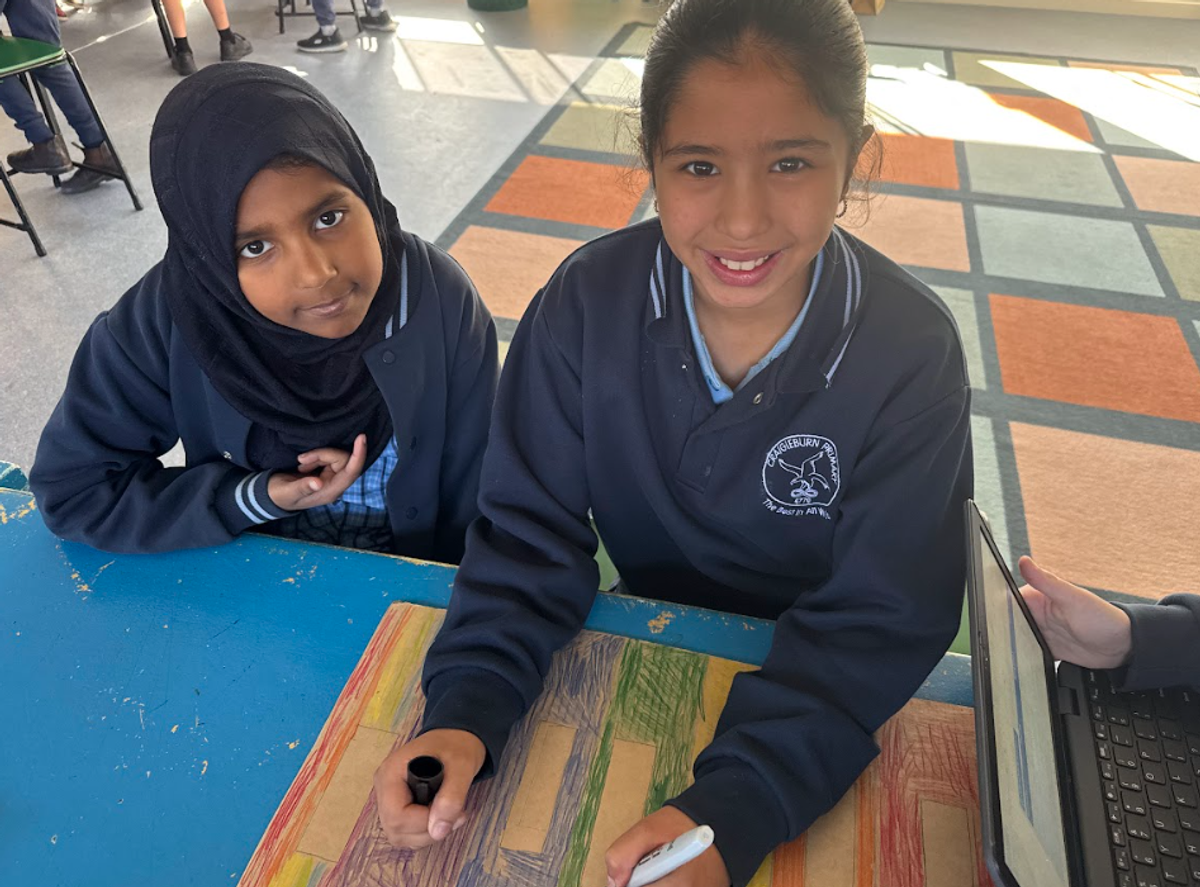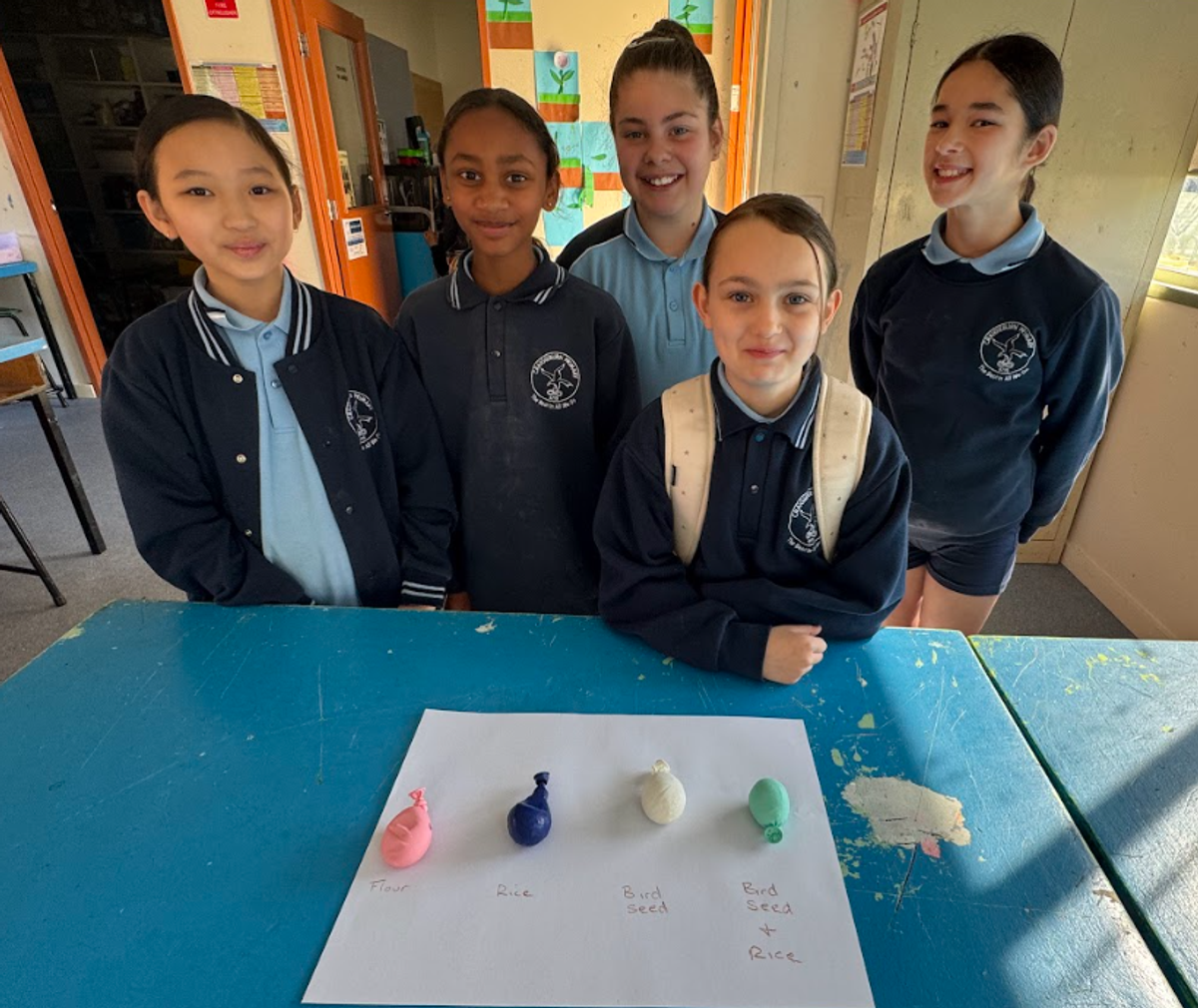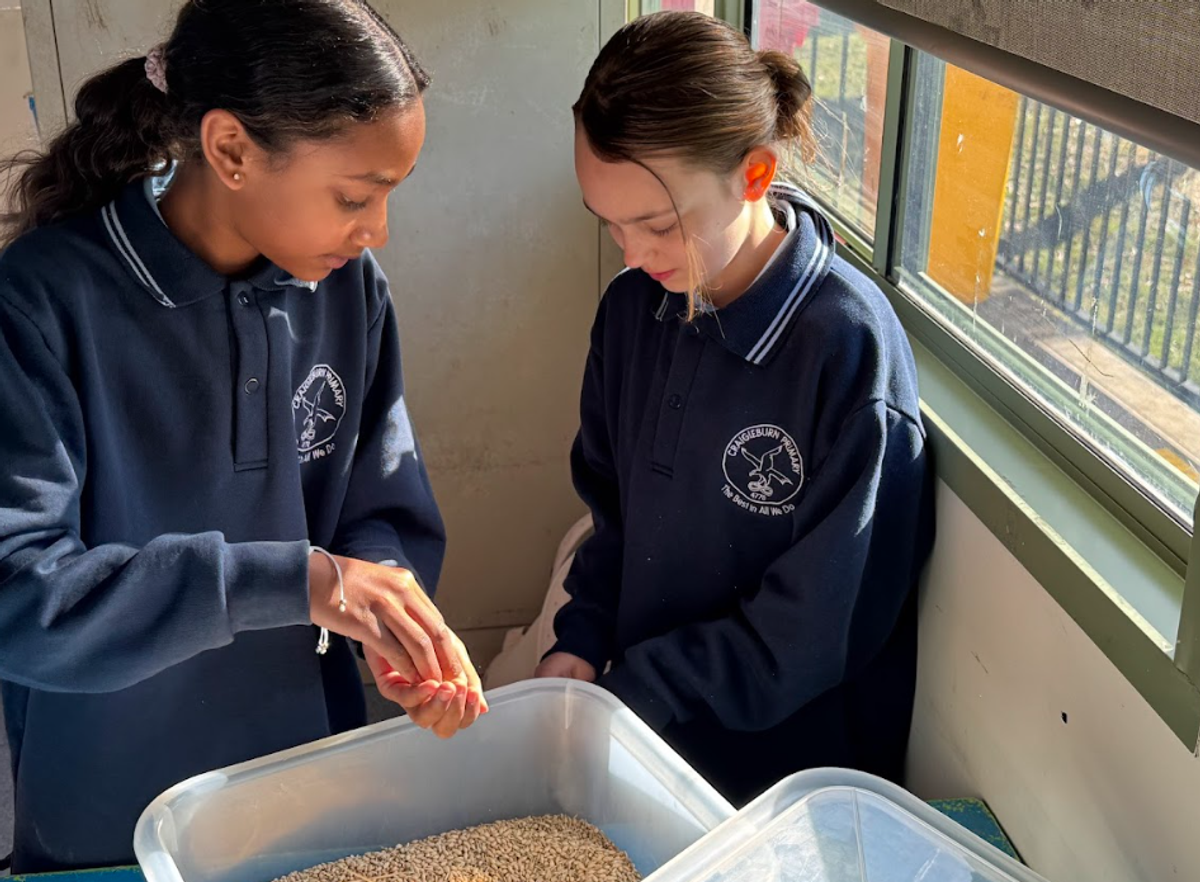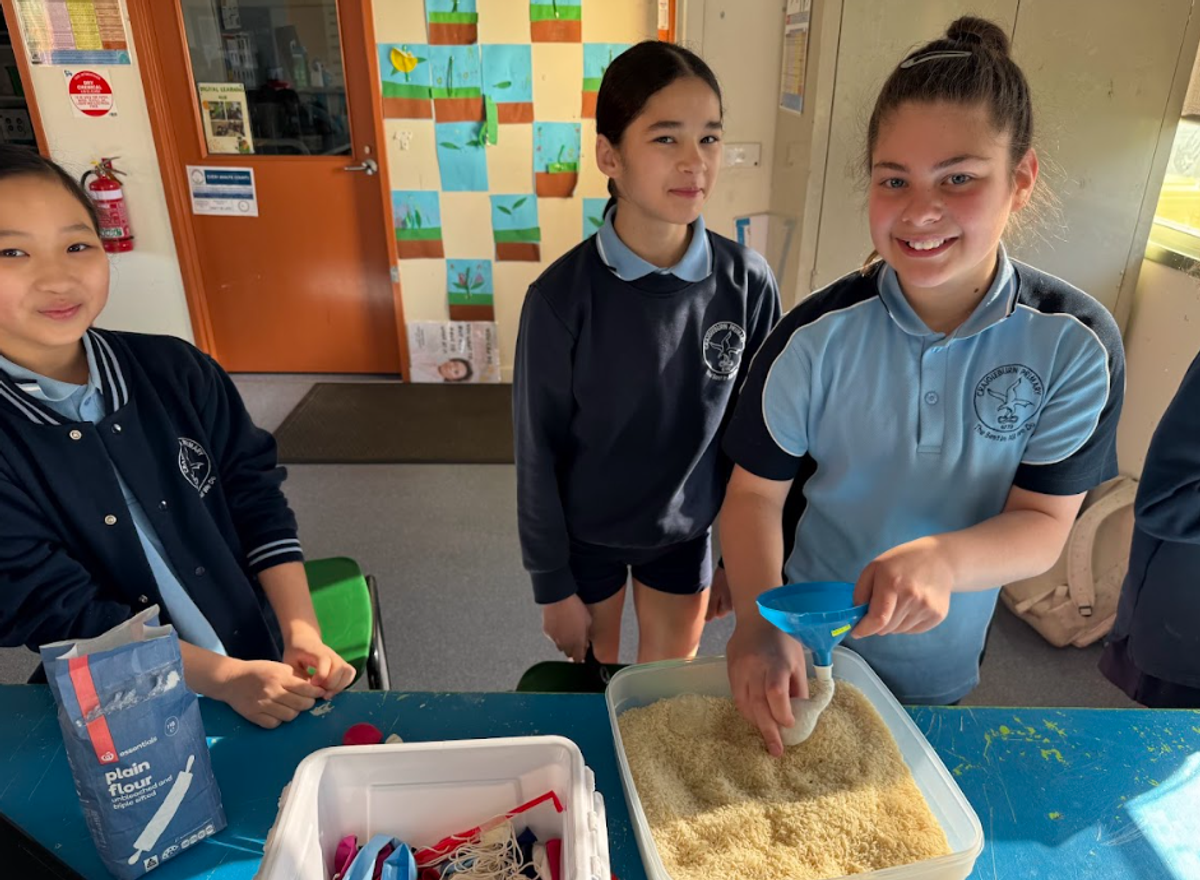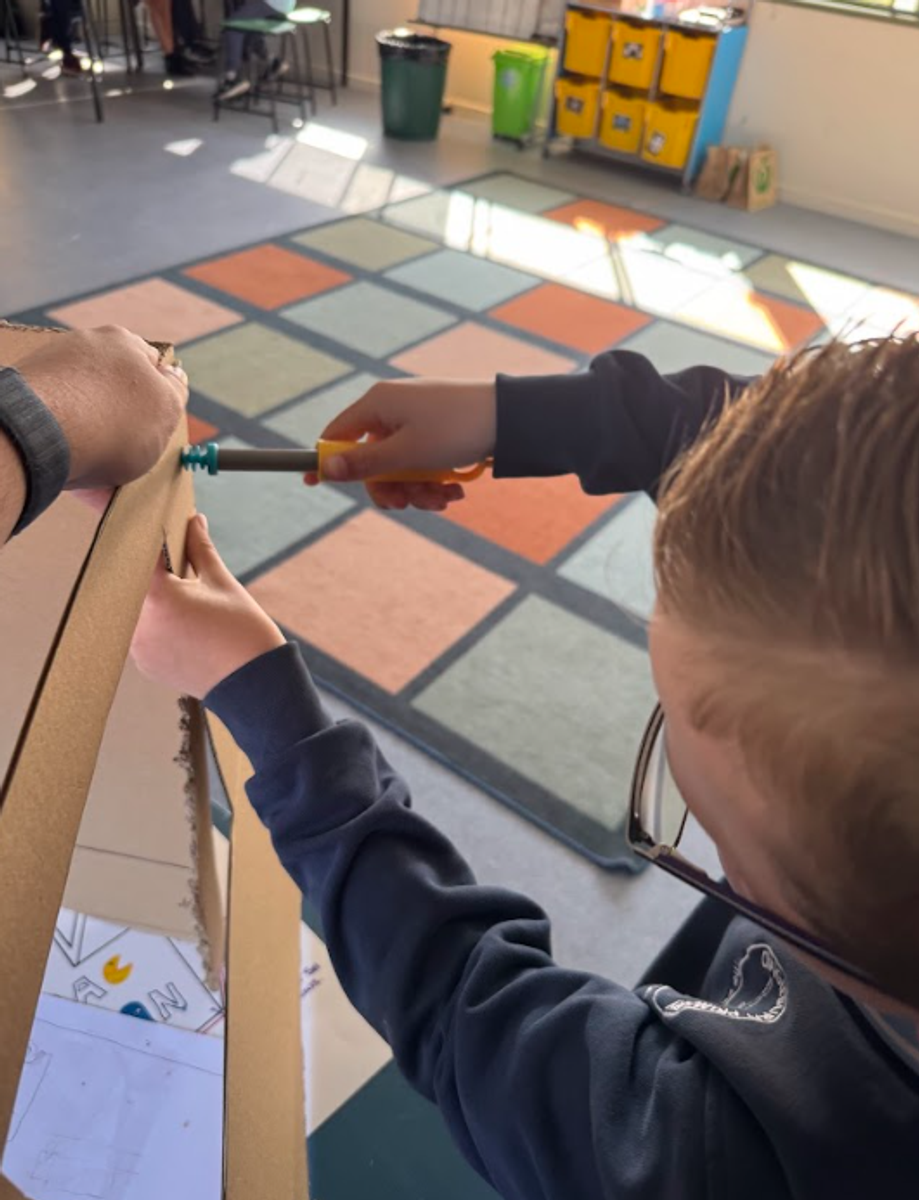Science Technology Engineering and Maths

STEM
Foundation
At the end of Term 3, the Foundation students took part in a series of team-building activities, focusing on how they could work together to design and create using different materials. These activities helped students practise sharing ideas, problem-solving, and collaborating to build their creations.
This term, students are shifting their focus to being safe when using digital technology. They are learning about responsible online behaviour and the importance of making safe choices when sharing information.
This week, students were introduced to Wanda the Echidna, who taught them about being responsible online and helped us explore what information we can and cannot share to stay safe.
Year 1
At the end of Term 3, our Year 1 students also took part in team-building activities, exploring how to work together to design and create using a range of materials. These activities supported students to practise collaboration, problem-solving, and creative thinking.
To begin Term 4, students have been busy participating in their swimming program. It has been wonderful to see how their personal skills have grown and developed during this time, from building confidence in the water to demonstrating independence and resilience. I’m incredibly proud of the way they have approached this program and supported one another.
Year 2
Our Year 2 students have recently completed their Push and Pull science unit, where they explored how different forces affect the movement of objects. To begin Term 4, students have shifted their focus to digital technologies and design, creating simple and detailed drawings that will be used in the coming weeks for a fun challenge, to see if they can trick the computer into guessing their drawings.
Through this activity, students are learning to think carefully about the features and details in their artwork, comparing the differences between simplistic and detailed drawings and how these impact recognition.
Year 3
Our Year 3 students have been busy continuing the construction of their desk pet clubhouses, drawing on their earlier design plans to bring their creative ideas to life. A key focus this term has been on completing their materials justification sheet, where students reflect on and explain the reasons behind their material choices.
Students are learning that engineers and designers don’t choose materials at random, they carefully consider the properties, availability, and purpose of each material. For example, they might choose cardboard for its light weight and ease of cutting, popsicle sticks for strength and structure, or fabric for decoration.
Year 4
Our Year 4 students are now well underway with their Makey Makey projects, and the STEM room has been alive with creativity and invention! Using their knowledge of circuits, conductivity, and digital systems, students are bringing their ideas to life through a range of interactive designs.
Projects currently in development include:
- Arcade-style games that respond to touch inputs made from everyday materials
- Interactive board games that use Makey Makey to turn traditional games into digital experiences
- Musical instruments created from unconventional objects, transforming foil, cardboard and playdough into functioning input devices
As part of the design process, students are drawing inspiration from real-world examples, peer discussions, and online sources to develop and refine their ideas. They are learning to prototype, test and improve their designs while thinking critically about how inputs, outputs, and coding work together to create interactive experiences.
Year 5
Our Year 5 students have been continuing their “Creating a Better World” projects, moving from planning into prototyping and hands-on testing. This unit challenges students to identify real-world problems and use design thinking to develop creative and impactful solutions.
One group has been experimenting with different fillings for sensory toys, testing flour, seed mixtures, and rice to explore which material provides the best sensory feedback. They’ve been recording their findings and refining their designs based on their results.
Other students have been researching and creating prototypes for inclusive playground equipment, such as wheelchair-accessible swings. They have been analysing existing inclusive designs, brainstorming ideas, and sketching solutions that promote accessibility and inclusion.
Additionally, a group of students has begun 3D printing a model boat designed to collect rubbish from waterways. Their design includes nets that can be attached to the boat, helping to scoop and remove debris as it moves through the water. This innovative idea reflects their growing understanding of how technology and engineering can be used to address environmental challenges.
It’s been fantastic to see students’ creativity, empathy and problem-solving skills shine as their projects take shape.
Year 6
Our Year 6 students are reaching an exciting stage in their “Block by Budget” design challenge, where they have been tasked with planning, designing, and constructing a house within a set budget using Minecraft Education. Over the past few weeks, students have been working hard to finalise the building stage of their designs, applying their understanding of spatial planning, structural design, and budgeting to bring their architectural visions to life.
Each student (or group) has carefully planned their layout to ensure their build is both functional and aesthetically appealing, while staying within the financial limits set by the challenge. They’ve had to think critically about design priorities, make compromises, and creatively problem-solve to maximise value, just like real-world designers and developers.
Next week, students will transition into the Spending Review Tracker stage, where they will analyse and justify how their budget has been allocated. This involves reviewing costs, identifying areas of overspend or savings, and ensuring that their final build aligns with their original financial plan.
